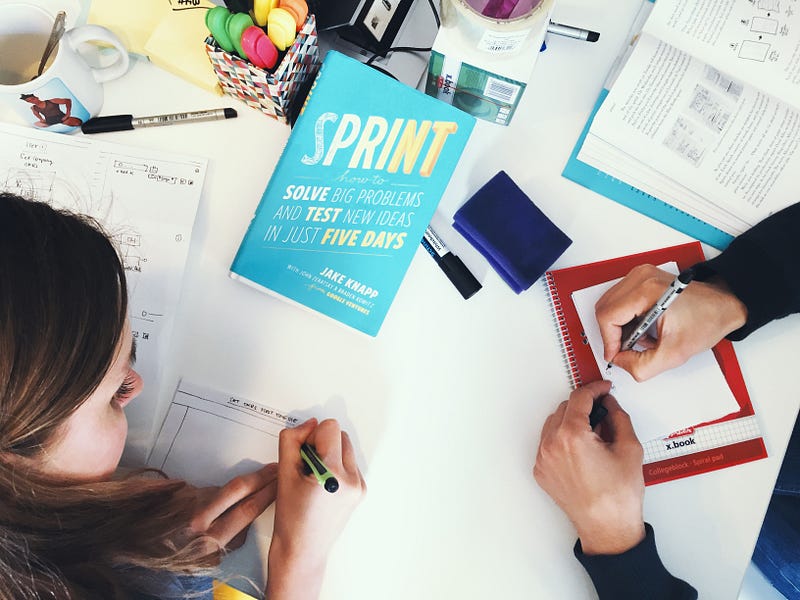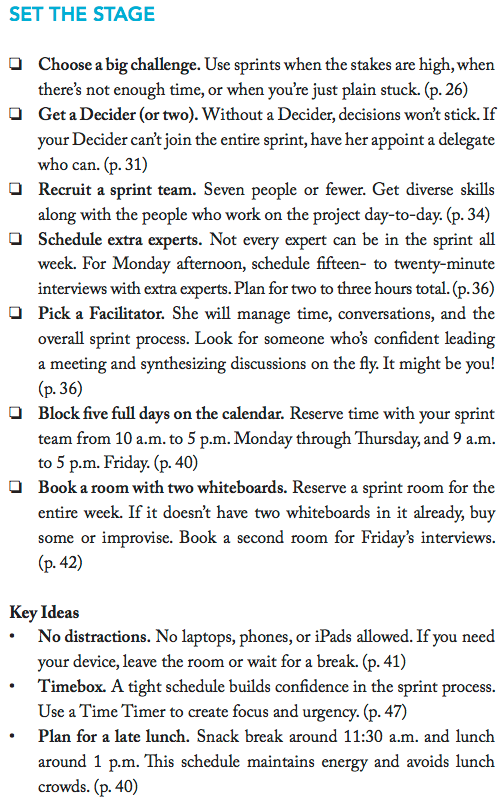Launch better products in 5 days: Part 1 of 4
Learn how you can get viable solutions in the hands of your paying customers in 5 days.
Real challenges, real solutions
Companies attempting to solve big challenges tend to get stuck at some point. Sometimes it happens in the very early days when they’re just tinkering with ideas. Sometimes it happens years into running the company, when they have new ideas to new challenges they’ve uncovered.
It doesn’t matter how you categorize the company — big or small, early or late, tech or toilet paper. If you’re tackling a challenge that many people care about, the right solution won’t always be the one you assume, the one others have built, or the one your customer told you about to begin with. You may need to experiment until you’ve found a fit your customers truly value, and in many cases, will pay for.
For instance, do any of these circumstance resonate?
You can’t decide which challenge is the most important to focus on.
You can’t decide which solution is the most important to launch.
Your customers aren’t using the solutions you launched.
This series of 4 articles is designed to give you the structure you need to push through these roadblocks, rally your team, and launch solutions your customers want.
Here’s what’s included:
This article: Design sprints — why and what?
Second article: Go inside 1 of our facilitated design sprints
Let’s kick off by learning about the basics of design sprints.
Getting familiar with a design sprint
The guiding framework we’ll be leveraging to help you progress is based upon Google Venture’s Design Sprint.
At New Haircut, we’ve facilitated lots of sprints. We believe in the process. More importantly, the companies we work with believe, because the results speak for themselves.
The birth of the design sprint
Before they were called design sprints, entrepreneurs and inventors, since the dawn of time, had been conceptualizing ways to cheaply and rapidly prototype ideas. One such entrepreneur was Jake Knapp.
In the early 2000’s, Jake was working as a product designer at Google. He was surrounded by smart people who had their own promising product ideas. But their priorities tipped toward the cash cows within Google; e.g. Adwords. That left little time for passion projects and new innovations.
Jake realized if he wanted to work on new ideas with others, it would need to be a process that allowed for rapid ideation, prototyping, and testing. Things would need to happen in days, instead of weeks and months.
Then, he spotted his first chance when he and 2 others were able to concept a video chat app over a weekend. That app was quickly adopted throughout Google offices around the world and eventually launched to the public as Hangouts (now Google Meet).
The success of Hangouts spurred other sprints. Gmail was launched as the output of another sprint. Sprints were becoming the de facto means of testing & building products throughout Google.
Google Ventures adopts sprints
The partners at GV (Google Ventures) witnessed this trend within Google. They realized that the startups inside their investment portfolio could equally benefit from running sprints. So when Jake was asked to join GV as a Design Partner, his challenge was to leverage this process to help their portfolio companies make bold, empowered, human-centered decisions. Quite simply, he was the guy tasked with giving each company their best shot of launching products to market that would take off and produce significant returns to the fund.
The GV team leveraged that same sprint process to launch companies with the likes of Product Hunt, Uber, Nest and Slack. They succeeded by taking Jake’s Google-vetted sprint process and refining it to the point that nearly any company could prototype solutions to just about any challenge.
Optional reading for companies
GV was able to apply the success of the sprints they managed for their portfolio companies and package the steps required and lessons learned into a book, Sprint: How to Solve Big Problems and Test New Ideas in Just Five Days. And while there’s no substitute to participating in a sprint, reading this book will certainly give you a jolt forward with implementing the process.

Duco instead?
If you can’t quite get to reading the Sprint book, or you’re the type of person that falls asleep after reading 17 words on a page (guilty), you can also install Duco for free on your iOS or Android device. Duco was designed to be a practical design sprint guide, providing a breakdown of best practices, daily tips, and guiding videos.
Design sprint 101
If you’re at all familiar with concepts like lean, agile and MVPs, a design sprint is like a best of from those playbooks. It’s a 5-day process to ideate, prototype, and test solutions, before committing resources to your agile development practices — learn more about what happens after a design sprint.
Sprints combine business strategy, innovation, science and design to create solutions to problems worth solving.
Here’s a high-level breakdown of the 5 sprint days:
Day 1: The group builds a team-wide understanding of the challenge, and visualizes it in a simple journey map.
Day 2: Each member sketches their solution, individually.
Day 3: Vote on the most compelling solution(s) and then create the start-to-finish experience within a storyboard.
Day 4: Turn your storyboard into a realistic prototype.
Day 5: Test the prototype with 5 customers and capture reactions & feedback.

What’s not quite covered in the Sprint book or this series is all of the critical business alignment and research required to select your sprint challenge and set your sprint up for success.
However we cover all of that in, What happens before a design sprint?
Logistical prep
In terms of being ready to rock on day 1, below is a summary of logistical boxes to check in the days leading up to your sprint.

Summary
A design design is a weapon that companies of all shapes and sized should consider wielding to ideate and validate solutions, before committing costly resources to bringing to market.
Like your team may be, we were also skeptical of what could be accomplished in 5 days. But the results, both inside New Haircut and the client teams we support, have been…honestly, remarkable. We hope this article sets the process in motion within your organization.
And while many of the design sprints we facilitate have been inside larger companies, in our next article in this series, we’re going to bring you behind the scenes of a sprint we managed for a 2-person, bootstrapped startup.


